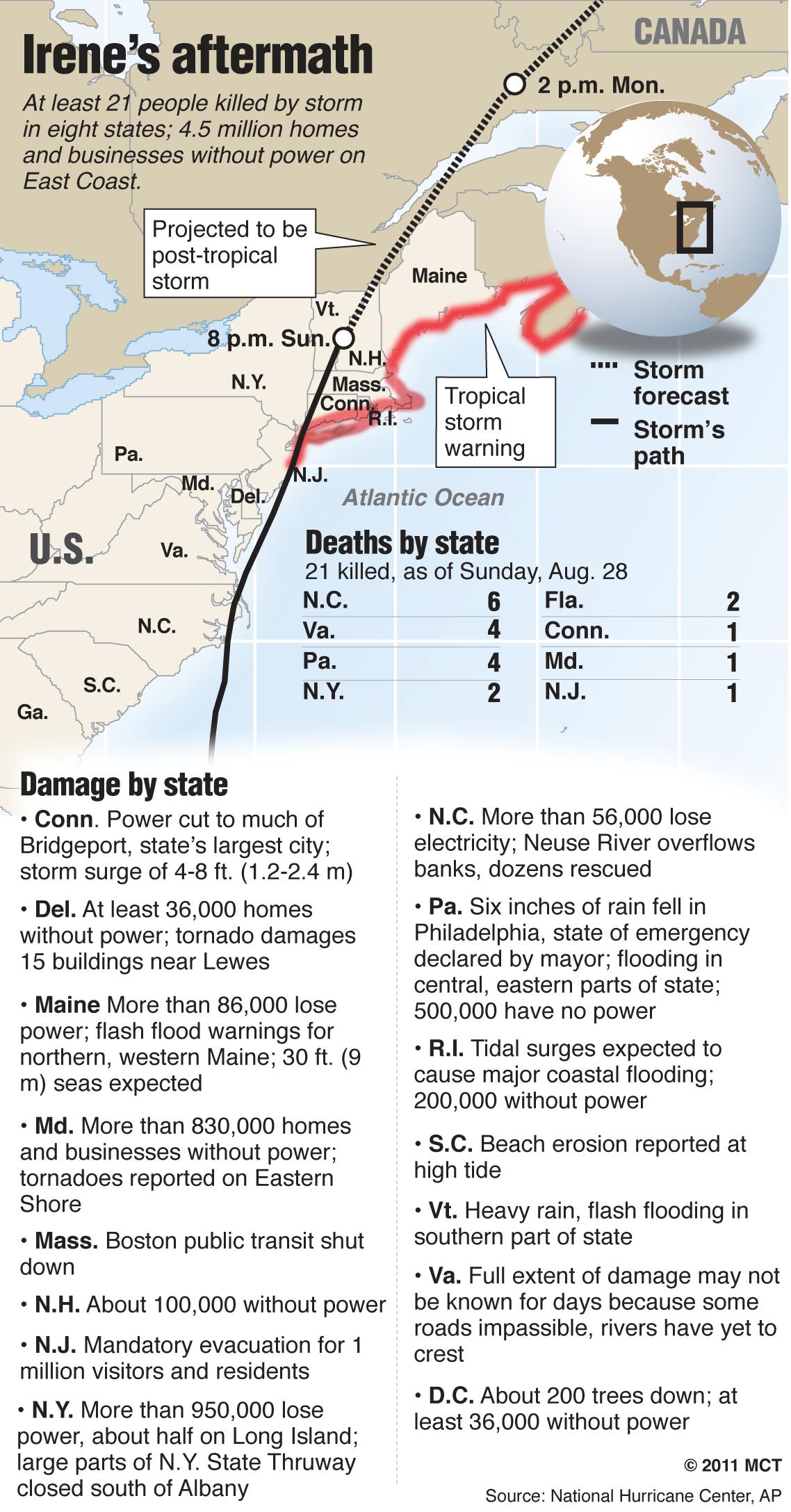Hurricane Irene touches USU
Dozens of USU students and alumni living in or visiting the East Coast last weekend stocked up on supplies and prepared for the worst as Hurricane Irene shook up the eastern United States.
Natasha Bodily, who studied at USU for three years before moving to New York City this year, said, “At first I wasn’t anxious about it at all, because I didn’t think it was going to be as bad as everyone was saying. But then my parents and aunts and uncles and cousins kept calling me and freaking out. They were actually quoting, word-for-word, Anderson Cooper on CNN, so I started to get pretty nervous.”
The biggest hurricane to hit the states since Katrina in 2005, Irene received extensive media coverage with weather advisories issued and evacuations ordered up and down from Florida to Maine. The worst of the storm occurred on Aug. 27 and 28, about six years to the day when Katrina ravaged the Southeast. This time, many more were prepared.
“The landlord told us that we should sleep in the living room so that the tree in the back wouldn’t fall down and crush us,” Bodily said. She said that she and her roommates personally prepared by stocking up on flashlights, food and water.
Jenny Corry, who attended USU her freshman and sophomore years of college and was in Washington DC at the time, said that hundreds of people there had the same idea. All of the local stores sold every single water bottle and flashlight until nothing was left, she said.
Corry said the most exciting part of the storm was mainly the anticipation. She said, “The day of the hurricane, I played flag football with a bunch of friends in the mud and the rain and that evening is when the storm really picked up. There were really strong wind gusts and it rained for about 18 hours straight.”
Some students, such as junior Michael Berry, had family members in hurricane areas. Berry’s brother-in-law, USU alumni Trent Merrell, lives in Concord, N.H.
Berry said that Merrell posted the following on the family’s website: “So far so good. We have plenty of water (both to drink and coming down from the sky outside) and all of our stuff outside is tied down. The wind is blowing pretty hard and at times it is raining side-ways, but we are doing well and it hasn’t been scary, yet. We lost power for a few hours this morning, but we were all sleeping.”
Berry said, “When Hurricane Irene was projected to go through his area, of course I was a little worried, but not too bad considering that he is quite up north, and the news said that it would be downgraded. So I wasn’t too worried.”
The storm claimed the lives of 43 individuals and destroyed the homes of thousands more. “The New York Times” stated that Irene will likely be one of the 10 costliest catastrophes in the nation’s history, with industry estimates suggesting $7 to $10 billion of damage due to heavy rainfall and flooding, crop destruction, sapped power and a negative impact on tourism.
Some USU students who experienced the effects of the storm said that it wasn’t nearly as bad as predicted, but many were not living in areas where the damage was particularly bad. Bodily said when the storm hit, it was mainly just incredibly windy and rainy. The subway system in New York City was shut down, but that, she said, was about as bad as it got.
Others, such as Corry, said houses nearby suffered damage from fallen trees, but she reiterated that the anticipation of the storm was the most exciting part.
Forecasting the effects of a hurricane is incredibly difficult, but preparing for them is something that, if done well, can save thousands of lives. Currently, USU plays a unique role in storm preparation. USU’s USTAR Space Weather Center is the leading center in the entire nation that has the capability to establish where feasible lines of communication can be found in the midst of natural disaster. Through the use of computer models and data, the center enables emergency responders to use high-frequency radio communications to aid in contacting friends or families in times of need.
“There are no other schools with that capability and no other government agencies or companies either, so it’s pretty unique,” said Kent Tobiska, director of the SWC. “It represents a very cutting edge way of translating the physics of space weather information so that we can apply it to help us with daily activities.”
Tobiska said when Katrina hit the United States, the fourth largest solar flare in history went off and disrupted communication frequencies that were already frazzled from the storm. Fortunately, he said, no solar activity interrupted communications during Irene, which aided in emergency response.
As thousands attempt to recover their homes and businesses in the aftermath of the storm, many were left unscathed despite warnings stating the worse would occur. Bodily, however, said she was grateful for the warnings.
“I think that some people thought the precautions were a little overkill, but I think that it’s probably always better to rule on the side of caution,” Bodily said. “Being overly cautious was probably a good thing, even though it was inconvenient for a lot of people.”
Despite casualties, CNN reported, emergency preparedness efforts were much more successful during Irene than they have been in the past, and that could very well have saved many lives.
— ariwrees@gmail.com


